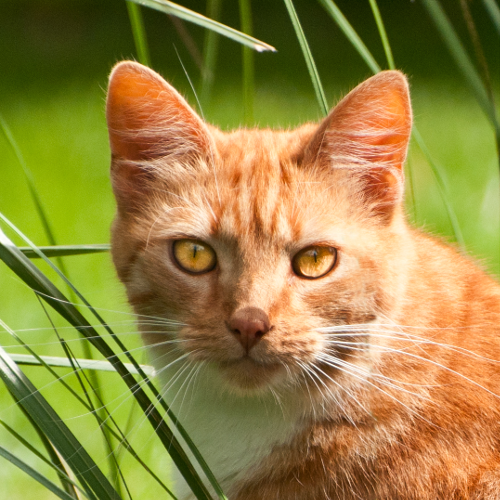So you have decided that a cat is right for you and that you are right for a cat. Now here are some of the more practical things you will need to care for your new feline friend:
Carrier
A carrier is necessary for safely transporting your cat or kitten. It will keep her safe in the car and give her a sense of security. Make sure the carrier is large enough for your cat. A cat carrier is required to collect your cat from Galway Cat Rescue to bring her home for the first time.
Litter box
A litter box, litter and a scoop are essential. Make sure the litter box is large enough for your cat; if you have selected a kitten, make sure the box-sides are low enough that he can easily get into the box. You will probably need a lower-sided, slightly smaller litter box for the kitten-months, and then will need a larger litter box as your kitten becomes an adult cat. Line the box with approximately 3-6 cm (1-2 inches) of litter.
If you have adopted a kitten, use non-clumping litter until he is approximately four to six months of age, as kittens can be messy and clumping litter will adhere to his or her fur. The kitten will then attempt to groom himself and will ingest the clumping litter, which can cause stomach upsets, illness and/or intestinal blockages.
Make sure the box is deep enough so the litter stays in the box and doesn’t spill onto the floor. Droppings should be removed daily using a litter scoop. Keep the litter box in a quiet but accessible area (i.e. not next to the washing machine) and away from the cat’s food.
Kittens usually require the litter box to be in a very obvious and easily accessible area. When they have to eliminate, kittens aren’t usually able to remember that the litter box is, say, down the stairs and in the back storage area of the basement, and they can’t always ’hold it’ until they get there!
Once the kitten is using the litter box reliably, you can gradually move the litter box to its permanent location. Just be sure he knows where it is when you move it - you can take him to the box’s new location, and place him in it as a reminder. Cats have an incredible sense of smell, and will usually be able to follow their nose to the new litter box location.
Adult cats are usually quite capable of locating the litter box on their own. If you want to be certain that he knows where it is, you can take your new cat to the litter box and gently place him in it. That’s usually all it takes, and as long as you keep the litter box and immediate area clean, you generally won’t have any litter box problems.
Food and water
Feed your cat or kitten with a complete and balanced diet. We recommend a mixture of dry and wet food. Offer your cat fresh, clean water to drink on a daily basis. Provide both food and water in clean dishes. Contrary to popular belief, cats should not be given milk as their main source of hydration. In fact, giving your cat milk can cause indigestion and diarrhoea.
Bedding
Most cats enjoy having their own bed, or a cosy place to nap like a little basket. While they may discover these cosy spots on their own, it is still good to provide them with their own bed initially. This doesn’t have to be an expensive plush bed; something as simple as a cardboard box lined with a cushion and soft washable material such as a blanket will work just as well. Be sure to wash the bedding often. Place the bed in a quiet, draft-free spot, away from the heavy-traffic areas in your home.
Scratching post
Cats use scratching posts to stretch, mark their territory through the scent glands located in their paws and to clean away dead scales from their nails.
Toys
Kittens and older cats love anything that moves or rolls - basically, anything that catches their natural curiosity and their instinct to stalk and pounce. This could be anything, from a rolled-up ball of paper to string or a bouncy ball. The key is to make sure the toy is safe for your cat or kitten.
Collar and tag
The collar should be a safety collar, which has an elastic panel that will allow your cat to free herself if the collar becomes caught on something. A tag should carry your phone number in case the cat gets lost.
We recommend getting your cat microchipped. A small microchip is placed in the scruff of your cat’s neck. The chip has a specific number, which allows any vet to access your contact information, such as name, phone number and address, through a database. This can be essential for your cat's safety.
